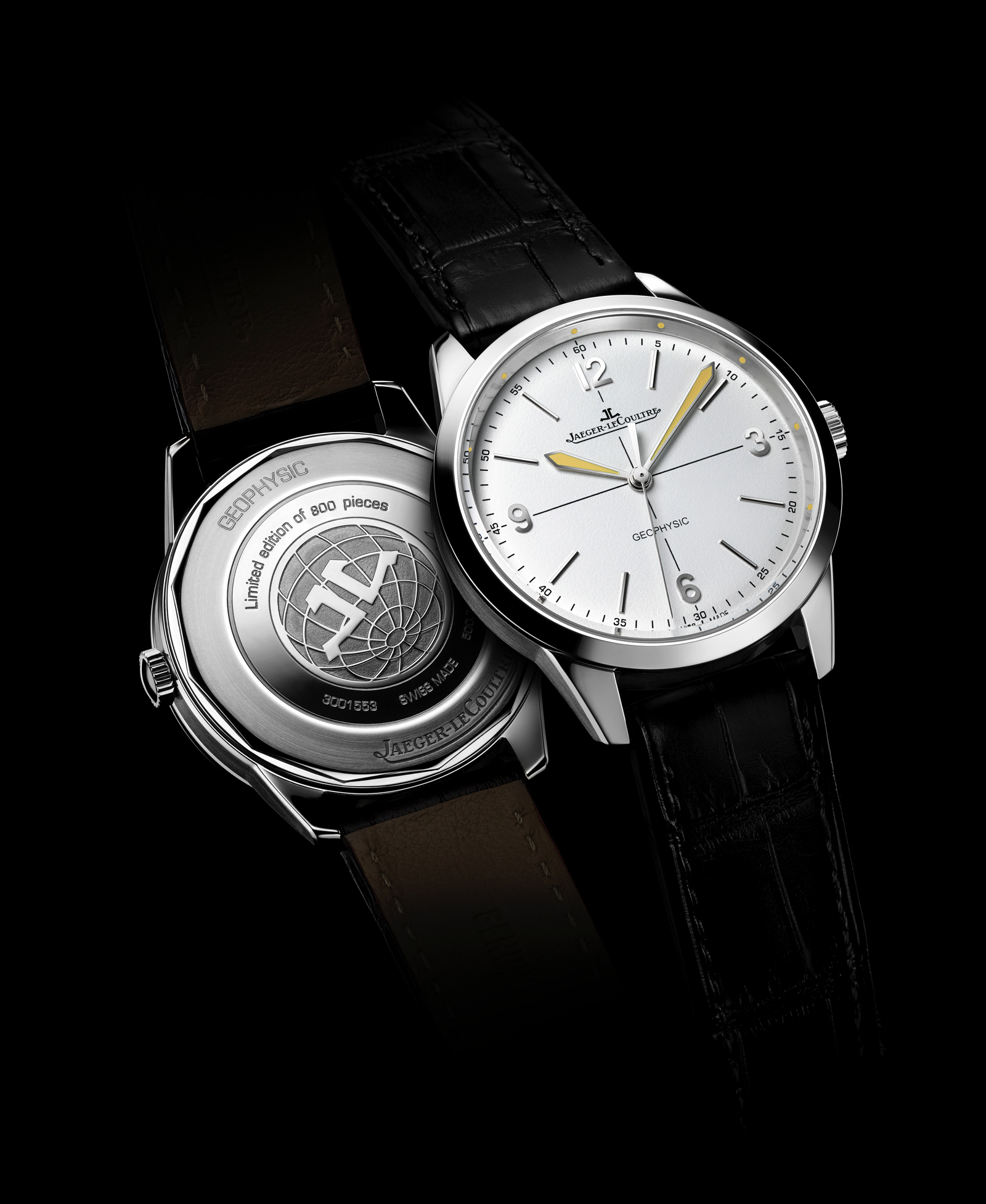Last week, Jaeger-LeCoultre unveiled a new collection that pays tribute to a timepiece originally produced in 1958 for scientists, explorers, and adventurers — the Geophysic. The name Geophysic comes from International Geophysical Year, which was an international scientific project that lasted from July 1, 1957, to December 31, 1958. It marked the end of a long period during the Cold War when scientific interchange between East and West had been seriously interrupted.
There are three different versions of the Tribute to the Geophysic 1958 that will be available: stainless steel, pink gold, and platinum. The first two are based on the original model from 1958, and the latter is based on the later version of the Geophysic.
All three timepieces come in a round 38.5 mm diameter by 11.40 mm thick case. Polished bezels, lugs, and crowns for all versions. Satin-brushed middle case, and solid caseback. Water-resistance rating to 100 meters. The original movement used in the Geophysic was a caliber 478B which is manually wound and beats at a frequency of 2.5Hz. In comparison, the modern movement powering the new collection is caliber 898/1 which features automatic winding and a higher frequency of 4Hz.
A Glucydur balance ensures stability during temperature changes. A Kifparechoc shock absorber protects against shocks. The balance is free-sprung, with screws to make micrometric adjustments. There is also a swan neck index to make rate adjustments. Spyr gears allow for smooth transmission of torque through the gear train. The oscillating weight rotates using ceramic ball bearings that are more efficient than standard bearings and require no lubrication. The power reserve is 43 hours. A soft-iron inner case protects the movement from the effects of magnetism up to 600 gauss.
The original Geophysics came with luminous hour dots built into the plastic crystal. For modern Geophysics, in stainless steel and gold, Jaeger-Lecoultre chose to incorporate luminous dots into the flange (the platinum boutique version has luminous hour dots around the outer ring). Like in previous Tribute collections, the color of luminous material on the hour and minute hands, as well as the dots, is referred to by Jaeger-LeCoultre as the historical color, which means it is modern Superluminova luminous material made to look like tritium that has become patinated.
All models have a white dial, with cross-hair markings on the steel and gold versions (similar to the original Geophysic).
The hour and minute hands are dagger-shaped and rhodium plated on the steel and platinum version (and gold-toned on the pink gold version). Central sweep seconds hand with stop seconds mechanism for precise setting. Hand-applied Arabic numerals and indexes marking the hours.
This watch has passed Jaeger-LeCoultre’s 1000-hour control test. Unlike chronometer testing that only covers the movement, the 1000 hours control tests the whole cased-up watch over a period of six weeks, in six positions, while rotating and at rest. In addition, this is an observatory chronometer, so each piece will be adjusted to an accuracy of +1/-4 seconds per day before it leaves the factory. Ultimately, the watch is able to withstand rigorous daily use in a wide variety of extreme conditions, while maintaining high accuracy.
The steel version retails for $9,800 and comes with a black alligator leather strap. The pink gold version retails for $20,800 and comes with a chocolate brown alligator leather strap. The platinum version is a boutique exclusive and retails for $32,000 on a blue alligator leather strap. (Ref. Q8008520 steel – limited to 300, Q8002520 pink gold – limited to 800, Q800652j platinum – limited to 58)













